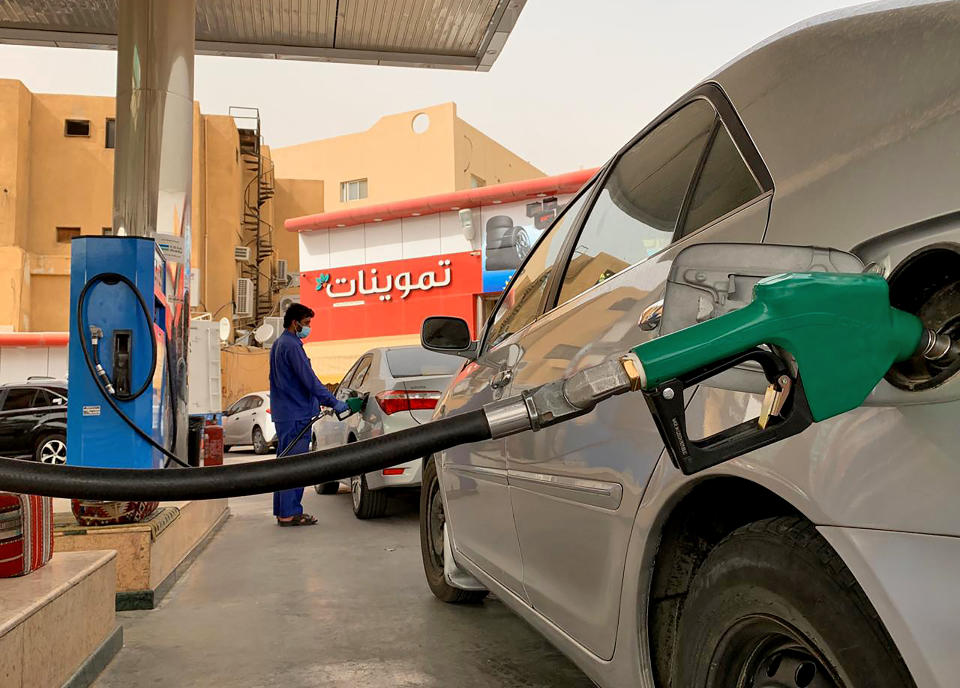Oil prices rise on hope worst is over for demand

Oil prices rose on Monday, amid hopes that the worst may be over for fuel demand.
Amin Nasser, chief executive of the world’s biggest oil company Saudi Aramco, told reporters on Sunday: “The worst is likely behind us.”
Nasser’s sentiment echoes that of the International Energy Agency (IEA), which said last month “the worst of the oil market turbulence is behind us.”
Meanwhile, Iraq last week pledged to cut its oil output by 400,000 barrels per day, which should support prices by restricting supply in the market.
Brent futures (BZ=F) were up 0.8% to $44.79 (£34.30) per barrel on Monday morning, while crude (CL=F) was up 1.2% to $41.75.
The rally buoyed oil stocks. In London, BP (BP.L) was trading 3.5% higher, while Royal Dutch Shell (RDSB.L) was up 2.5%.
Shares in Suadi Aramco (2222.SR) were up just 0.3% in Riyadh. Despite its relatively upbeat outlook and a commitment to pay a dividend, the company reported a 73% slump in second quarter earnings.
Oil prices have been devastated by the COVID-19 pandemic, which led to collapsing demand for fuel as a result of lockdowns around the world.
Crude futures had been trading around $60 per barrel at the start of the year but turned negative for the first time in history in April amid collapsing demand. It came despite production restrictions from OPEC+ nations.
The easing of lockdowns around the world has helped to spur demand for oil, driving a mild recovery for prices. However, demand is still well below 2019 levels and analysts don’t expect it to recover to pre-pandemic levels for years.
READ MORE: Coronavirus: Crisis pushes debt levels at UK firms to highest in 13 years
“The market is really trading on different bits of news that come out, good and bad, around that demand narrative,” said Paul Hickin, associate director of EMEA Oil News at commodities market information provider S&P Global Platts.
Hickin said oil had been trading in a tight price range and S&P Global Platts expects prices to struggle to stay above $40 per barrel in the coming months.
“You’ve got to be careful taking small moves in the market,” Hickin said. “Really it’s demand that’s the big driver. Where is the market seeing demand going? There’s still huge questions in markets around that.”
Hickin said declining demand from India and a recent buying spree from China, which could come to an end, could both put downward pressure on prices. Fears about a COVID-19 second wave and increases in production from OPEC+ nations in the coming months are also potential sticking points.
He added: “We’ve still got a huge stock global overhang and if you’re talking about rebalancing the market, then that needs to be cleared as well.”
S&P Global Platts expects the price of Brent to rise to $50 per barrel only by the end of 2021.
UBS analyst Jon Rigby and team wrote in a note on Monday: “The narrative is still very much focused on the resurgence of coronavirus infections being the main uncertainty around demand balanced with major stimulus packages.”

 Yahoo Finance
Yahoo Finance 